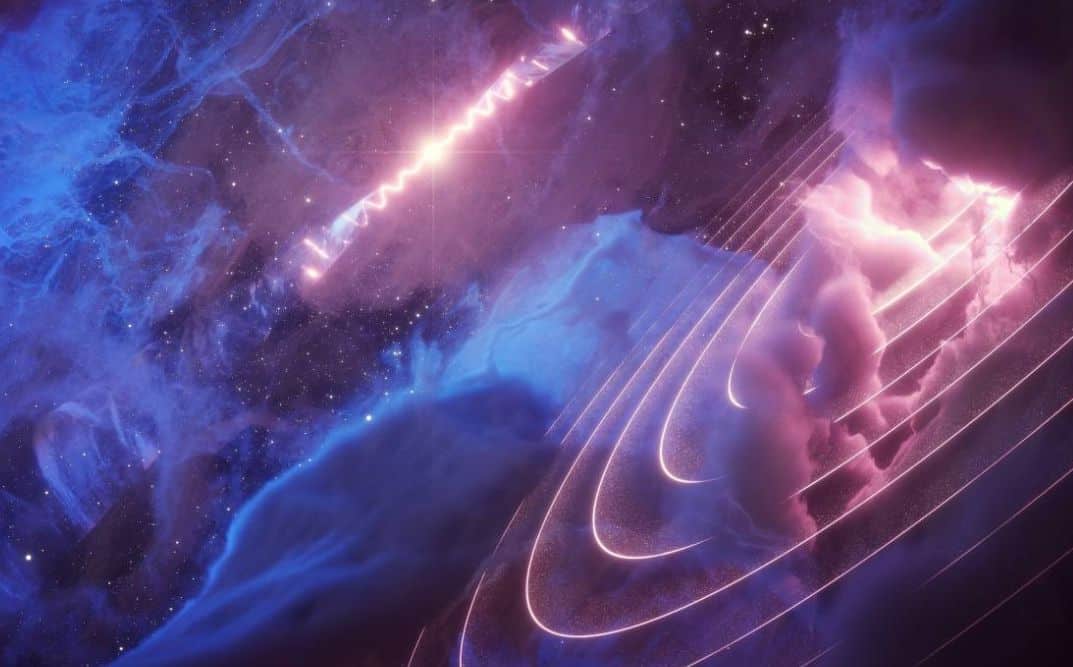Scientists at the Institute of Space Sciences have shed light on how cosmic rays spread near microquasars, small, local siblings of distant quasars.
A team led by scientists from the Institute of Space Sciences (ICE-CSIC) and the DESY laboratory in Hamburg (Germany) has detected a mysterious pulse of gamma-ray coming from a cosmic gas cloud. The cloud, without any extraordinary characteristics and located in the constellation of the Eagle, in the Milky Way, beats at the same rate as a nearby black hole, indicating a connection between the two.
The finding, published in the journal Nature Astronomy, sheds light on how cosmic rays are produced and propagated near microquasars, as the observed black hole, 100 light-years away from the cosmic gas cloud, is located in one of these integrated binary systems that comprise a compact object and a companion star. These microquasars, small and local siblings of the distant quasars, launch into the interstellar environment around powerful winds and jets of matter from a neighbouring star.
“The observed time signal provides an unequivocal connection between the microquasar and the gas cloud, separated by about 100 light-years. This fact is as surprising as it is intriguing and opens up questions about how the black hole feeds the heartbeat of the cloud”, points out Diego F. Torres, ICREA researcher at the Institut d’Estudis Espacials de Catalunya (IEEC) at the ICE-CSIC.
Swaying jets
The researchers analyzed more than ten years of observations carried out using the Fermi Gamma-ray Space Telescope of NASA. The system observed in this study, named SS 433, is about 15,000 light-years distant. It consists of a giant star with about 30 times the mass of our Sun (solar mass) and a black hole with approximately 10 to 20 solar masses.
The two objects are orbiting each other, while the black hole absorbs matter from the giant star. The SS 433 is one of the most famous compact binary systems known, due to the observable swaying jets, and although it has been studied for decades, it still surprises researchers.
“This material from the giant star accumulates on a disk around the black hole before falling into it like water in a whirlpool from a bathtub drain,” explains Jian Li, a researcher at DESY. “However, some of that matter does not fall down the drain, but is shot out at high speed in two narrow jets in opposite directions above and below the accretion disk,” he says.
“The accretion disk is not exactly on the plane of the orbit of the two objects,” Li adds, “but is swinging like a top that has been tilted on a table. As a result, the two jets spiral into the surrounding space, rather than just forming a straight line.”
The swaying of the black hole jets makes a periodic movement that lasts 162 days, approximately. The high-speed particles and ultra-strong magnetic fields of the jet produce X -rays and gamma rays, the latter having been observed by the team. The meticulous analysis revealed a gamma-ray signal with the same period from an ordinary gas cloud located relatively far from the microquasar jets. The pulsation rates of this gas cloud indicate that the emission of the gamma-ray signal is governed by the microquasar.
One explanation the team has explored is based on the impact of rapid protons produced at the ends of the jets, or near the black hole, which are injected into the cloud and hit the gas particles, producing gamma rays. The protons could also come from a rapid particle ejection from the edge of the accretion disk. Every time this stream of particles hits the gas cloud, it lights up producing gamma rays, explaining its strange pulse.
“The flow of matter from the disk could be energetically as powerful as that of the microquasar jets and it is believed that it balances together with the rest of the system”, explains Torres.
Beyond this initial discovery, both additional observations and a theoretical study are required to explain the gamma-ray pulses from this unique system. Scientists from Spain (IEEC-ICE-CSIC), Germany (DESY), China (Nanjing University and Purple Mountain Observatory) and the United States (NRL) have collaborated in this work.
